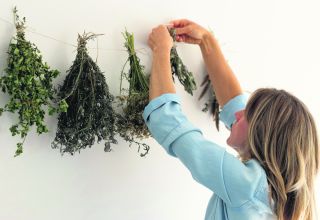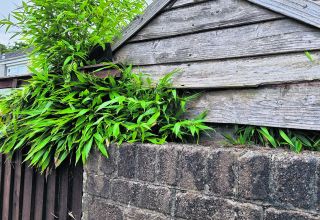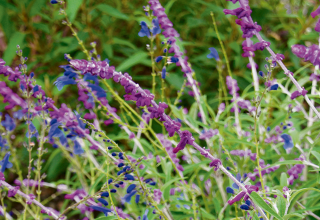The hugely popular pink flowery shrub can be seen throughout Cornwall and flourishing in gardens by the sea
It’s not surprising that tamarix, the pretty pink feathery flowered tree is so associated with Cornwall.
One head gardener has been campaigning for it to be adopted at the Cornish county logo such is its prominence.
Tamarix is one of those plants you notice on holiday in gardens near the sea.. In Cornwall you will see them as hedges as you drive along narrow lanes but the shrub is also hugely popular through the county.
Tamarix are deciduous shrubs or small trees of feathery effect, with minute leaves and racemes of very small pink or white flowers in spring, summer or early autumn
The general assumption is that, like local holiday wines, tamarix does not travel, although any tamarix in the British Isles is already a long way from home.
Most tamarix are Mediterranean types. Resin from Tamarix gallica was the source of the Biblical manna from heaven. In Hebrew, the word manna literally means “what is it?”, which is the cry that went up from the Israelites in the wilderness when they saw the golden dewdrops in the desert. This sweet, sticky substance from the bark of tamarix bushes is insect-digested sap that falls to the ground overnight.
By day, ants feast on it and in hot sun it melts, so its dawn appearance as described in Exodus every morning, in time for the Israelites’ breakfast, must have seemed truly miraculous.
Plants that tell a story as good as this are always fun to grow, but the conditions for producing manna at home cannot be reproduced and T. gallica is not quite as thrilling to look at as its relation from Russia, Tamarix ramosissima, as showy a late-summer shrub as you could wish for.
It has tiny, blue-grey leaves on feathery, arching branches, and at this time of year these are covered in tiny, blossoming sprays that mass together to make huge panicles of plumy pink. Like manna from heaven, Tamarix ramosissima is a late-summer miracle to refresh the exhausted garden.
Most plants like to be given the sort of conditions that they choose in the wild, but tamarix seem to do better in the garden when they are grown on soil that does not dry out completely.
Although their natural preference is for sun and sand, the salt in the air and in the moisture from the ground near the sea acts as a moisture regulator. It provides a built-in guard against transpiration.
Pruning also adds stress – it never happens in the wild, but gardeners do it to get more flowers, so tamarix in exile must be treated well. They are worth it. If you give them a sunny place and do them proud, they will be in flower for a couple of months at the dimmest moment of the summer.
Prepare the ground well with plenty of organic matter, but aim to get the drainage good enough so that waterlogging in winter is not a problem.
Tamarix should not be overfed, especially not after midsummer, because this produces soft growth. If you think there is not enough goodness in the ground, throw a handful of Vitax Q4 on the ground in April, but a rich compost would be better.
Good companions
Any broad-leafed plant makes a good contrast to the finely cut, airy foliage of tamarix. Iris x robusta ‘Gerald Darby’, which seems happy anywhere, would be an easy choice for gardens where the agapanthus’s lack of hardiness would be a problem.
Propagation is very easy from cuttings, which strike as easily as those from a buddleia. If you know anyone with a tamarix tree, get them to give you a cutting towards the end of the month and put it in a sandy trench, uncovered in the open. By next spring, it will have rooted.











